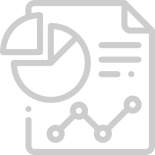Harnessing LinkedIn job postings for competitive intelligence
Posted by | Shiv Nayyar
Competitive intelligence depends on timely, relevant, and actionable signals. While many CI teams track news, press releases, and financial data, one often-overlooked resource is LinkedIn job postings. These updates offer an open view into a company’s priorities—revealing where it’s growing, what capabilities it’s investing in, and how its structure is evolving.
Unlike earnings calls or formal announcements, job postings are frequent, specific, and often ahead of the curve. Interpreting them at scale can provide early warnings and help validate broader market hypotheses.
Why job postings are a credible signal
Job advertisements are public commitments. They signal intent, funding allocation, and the urgency of internal initiatives. When tracked over time, hiring activity can uncover:
- Strategic growth areas such as AI, ESG, or data privacy
- Geographic expansion into new territories or cities
- Shifts in tech stack or platform preferences
- Organizational changes including new functions, restructures, product launches, and leadership roles
For example, a sharp rise in sustainability and ESG analyst roles could indicate a shift in corporate positioning, possibly ahead of regulatory or reputational pressures. A cluster of cloud engineering hires across multiple regions might suggest product modernization or global scaling.
Search filters that make it usable for CI
LinkedIn’s search functionality is flexible enough to support a wide range of intelligence needs. CI professionals can filter job postings by:
- Company: To monitor individual competitors or peer groups
- Industry: To assess broader sector trends and benchmark hiring patterns
- Geography: To spot expansion into new cities, regions, or markets
- Job function or title: To focus on specific capabilities or departments (e.g., engineering, legal, ESG)
- Date posted: To compare hiring volumes over time or track spikes in activity
These filters allow users to create tailored searches that align with their key intelligence questions and adjust them as priorities shift.
The role of regular tracking
To get the most value from this approach, monitoring needs to be consistent. A one-off snapshot may raise questions—but a regular cadence of analysis (monthly, for most teams) helps identify patterns, accelerations, and anomalies.
Over time, CI teams can begin to separate signal from noise:
- Is a competitor consistently building data science capability?
- Are hiring spikes linked to new funding rounds, or an early indicator of market entry?
- Are new job locations aligned with sales hubs, delivery centers, or something else?
Organizing this information into trend summaries or dashboards supports broader CI narratives and creates a foundation for more confident internal reporting.
It’s manual, but still worth doing
LinkedIn does not allow for automated exports of job data at scale, and scraping violates its terms of use. That means CI teams must rely on manual tracking or third-party tools that operate within ethical and legal boundaries.
Still, the payoff is clear. Even basic spreadsheets capturing job titles, locations, departments, and dates can become rich intelligence when assessed cumulatively. What starts as manual effort often reveals consistent signals well before they emerge in the press or earnings calls.
Using job postings to support key intelligence questions
LinkedIn job data can support a wide range of CI priorities, including:
- Market entry: New roles in unfamiliar regions or functions
- Capability development: Rapid hiring for specialists in emerging domains
- Partnership or M&A signals: Sudden hiring in integration, compliance, or transformation roles
- Organizational redesign: Senior-level hiring in customer experience, digital, or sustainability
These patterns provide input to Key Intelligence Questions (KIQs), helping to refine hypotheses and direct further primary or secondary research.
Why hiring signals belong in your CI toolkit
LinkedIn job postings are one of the few near real-time, company-generated signals available for competitive intelligence. While the process of tracking them remains manual, the insights they offer are both timely and strategic.
With a structured approach, careful filtering, and consistent monitoring, Fuld & Company can help you turn job data into a credible source of intelligence—supporting market tracking, early-warning systems, and competitive assessments.
Read more
Learn more about our Competitive Intelligence practice
Download our Scenario Planning Toolkit
Tags: Competitive Intelligence, Competitive Strategy, competitive strategy consulting



















